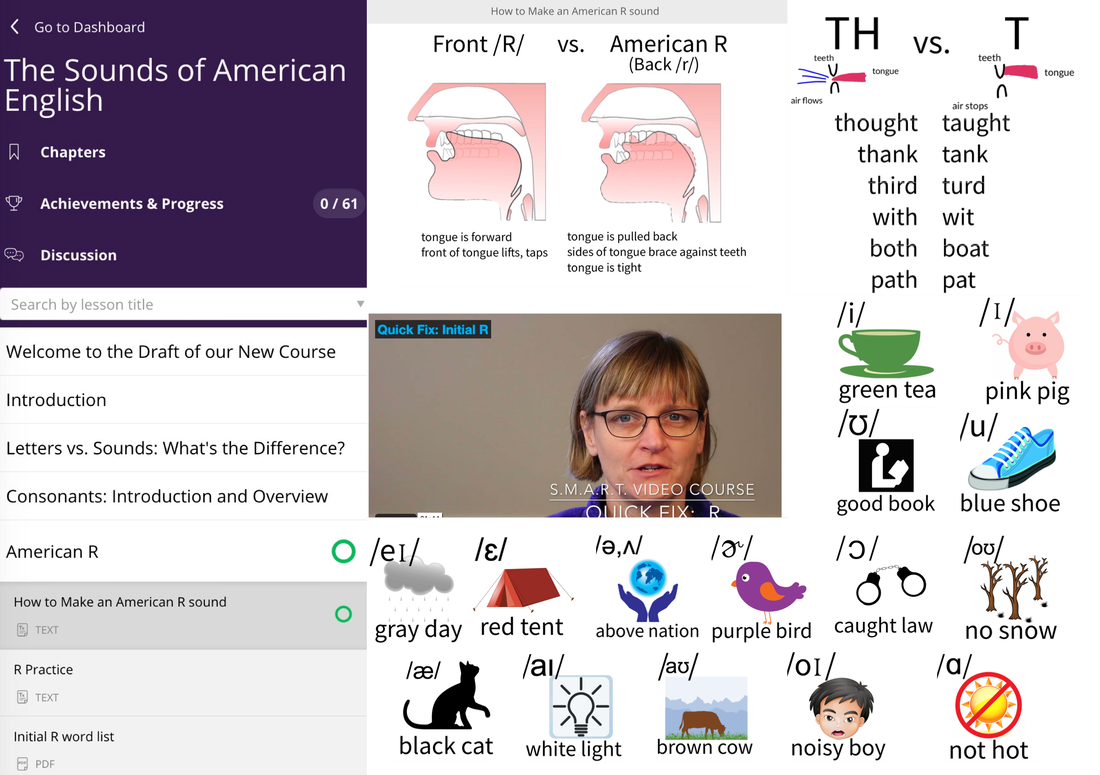|
Subscribe to our YouTube channel for free live classes! Join today.
Get help for all of the sounds of American English in our "Sounds of American English" Course. Currently on sale for $1.99, this course covers every sound of American English, errors you may have, and how to correct them. Get yours today! 
Ever have an American tell you they “just can’t understand the Indian Accent”? You are not alone. Despite having excellent English language skills, many speakers of Indian English experience difficulty with American listeners, especially over the phone or when speaking with people with little or no foreign language experience.
Here are a few tips to make your speech more easily understood by Americans. Watch the consonants “t” and “d.” Indian speakers of English have what we call a “retroflex” pronunciation of these consonants, meaning they use a different part of their tongue in a different location in their mouth than American English speakers. Try using the tip of your tongue on the bumpy ridge behind your front teeth for a more American sounding “t.” Americans also aspirate the "t" at the beginning of a word, meaning they allow the air to escape. Indian English speakers often hold in the air, making the "t" sound more like American “d.”
Be careful not to interchange “w” and “v.”
Words with the “v” sound at the start of the word or syllable are frequently mis-pronounced as “w.” Practice common words such as very, even, over using your top teeth against your bottom lip to produce American “v.” Words with “w” sometime sound more like a “v” in an Indian accent. Practice common words such as what, when, where, why, we, were, was, with by rounding your lips and not allowing them to touch your teeth to make the American “w.”
Stick out your tongue when saying “th.”
This may seem awkward at first, but “th” in American English is pronounced by putting the tongue between the teeth. Indian English speakers often make a sound which sounds more like a “d” or "t" to American listeners. The sound “th” is one of the most frequently produced sounds, as it is in extremely commonly used words such as the, this, then, with, other, that, they, through, them, these, there, three, thing. In fact, 20 of the 250 most frequently used words in English have “th,” making it a very noticeable error when mispronounced. Get our free ebook to help you with the TH sounds: Learn American Intonation American English uses a pattern of rising in pitch to the important word, and then falling off at the end of the phrase. A typical Indian accent will have more of a rising and falling within the phrase or even within the syllables of the word. This makes the speech sound odd and disconnected to the American listener. They may interpret the meaning of the words differently based on intonation. For example, a rising pitch on the last word or syllable of the sentence can make it sound like a question to an American listener. Listen to some examples and read more here. Want to learn more about the American Accent? Subscribe to our SMART American Accent For Indian English Speakers.
x
Subscribe for Free Live Classes
Subscribe to our YouTube Channel and get notified each time we have a live class. Free SMART American Accent Training.
5 Comments
shamshad khan
7/20/2016 02:09:31 pm
Online study for English speaking course
Reply
Mohit Gupta
7/8/2018 08:24:45 pm
thanks that was very helpfull
Reply
Christine, Speech Modification
7/8/2018 09:31:25 pm
I'm glad you found it helpful!
Reply
5/14/2024 12:36:37 am
Thanks for sharing your thoughts, but personally i believe that language is just a medium of communication if other person understands whatever we are saying then i don't think that accent really matters.
Reply
Leave a Reply. |
Subscribe to this blog:
Categories
All
Archives
March 2021
Copyright 2020
Christine Dunbar Have Questions?
Get A Free Consultation We offer a free 30-minute phone consultation. Schedule yours now. |



 RSS Feed
RSS Feed



